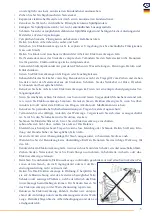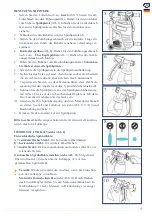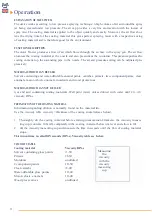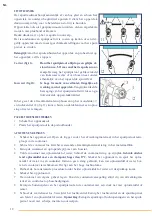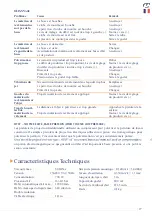
GB
|
13
!
STARTING UP
1. Attach air hose.
Device end
(fig.5): Place air hose end with pin in
5
guide. Secure by turning.
Spray gun end
(fig.5): Place the air hose
firmly into the connection on the spray gun. Secure by turning.
2. Unscrew the container from the spray gun .
3. Adjust the ascending pipe accordingly. It should be possible to
spray the contents of the container leaving hardly any material
left in the container.
4.
Spraying with horizontal objects
(fig. 6): Turn ascending pipe
forwards.
Spraying overhead objects
(fig.7): Turn ascending pipe
to point backwards.
5. Fill container with coating material.
Screw firmly onto spray gun.
6. Place the spray gun in the spray gun holder.
6
7. Only place the device on an even and clean surfaces. Device could
suck to dust ,etc.
8. Before connecting to the mains ensure that the mains voltage
corresponds the details on the rating plate.
9. Remove the spray gun from the spray gun holder and point at
object to be sprayed. Turn on using ON/OFF switch on the device.
10. Adjust the spraying pattern and amount of material; set the
amount of air and pressure, see fig.8,9,10,11 and the description
7
in page 13.
11. Open trigger on the spray gun.
Note:
When the device is switch on the air will flow continually from
the air cap.
ADJUSTING THE SPRAY GUN (see fig. 8)
Choice of spraying effects
A =vertical flat jet –
for horizontal surfaces
B =horizontal surfaces – for vertical surfaces.
C =round jet –
for corners and edges and other badly accessible places
Adjusting the required spray effect (see fig. 13):
With the union nut
(
|
3) loosed: turn air cap (
|
2) to the required spray effect.
Caution:
Never open trigger when making adjustments on the
air cap.
Adjusting the amount of material
(see Fig.10). Adjust the
amount of material by turning the adjustment knob. Turn anti-
clockwise to the (+) –more material. Turn clockwise to the (-) -
less material.
8
A
B
C
9
10





